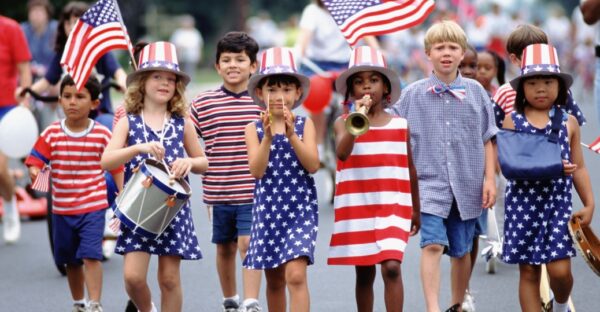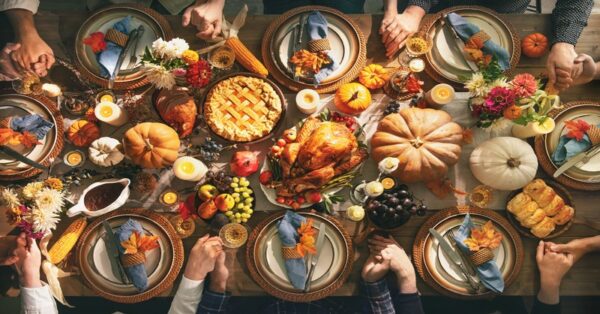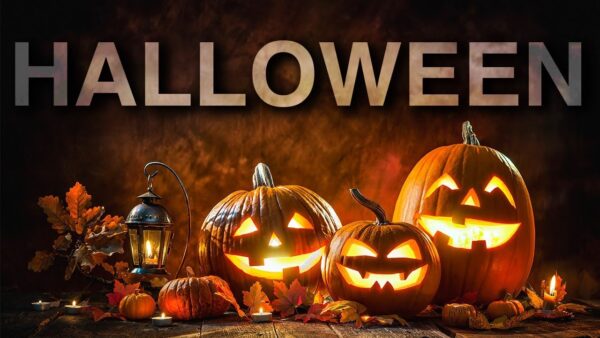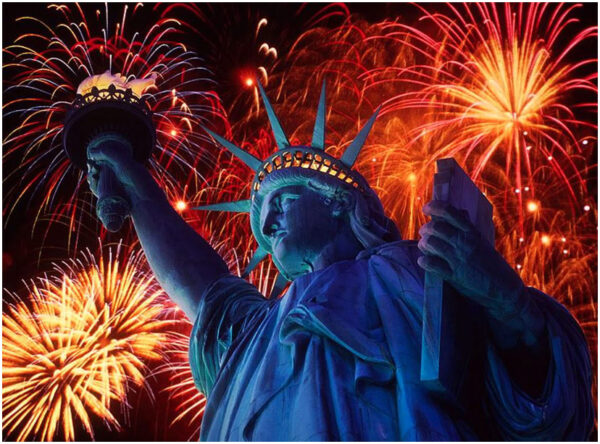**Celebrating Grand Festivities: Major Holidays in the United States**
- By - zudeco.com
- Posted on
- Posted in Blog
The United States, a nation known for its cultural diversity, takes great pride in its festive spirit. Throughout the year, Americans come together to commemorate a variety of significant holidays, each with its own unique traditions and celebrations. Join us as we take a journey through the major holidays that define the tapestry of the American cultural calendar.
1. New Year’s Day (January 1st):
Welcoming the New Year: A Detailed Look at New Year’s Day in the United States
New Year’s Day, observed on January 1st, is a momentous occasion in the United States, symbolizing fresh beginnings, resolutions, and a collective sense of optimism. As the clock strikes midnight on December 31st, Americans usher in the new year with a myriad of traditions and celebrations.
Midnight Countdowns and Fireworks:
The transition from the old year to the new is marked by festive countdowns. Cities across the nation host grand events, with the iconic ball drop in Times Square, New York City, being one of the most renowned. Fireworks light up the night sky, casting a dazzling display of colors and symbolizing the excitement for the upcoming year.
Parties and Social Gatherings:
New Year’s Eve parties are a common way for people to celebrate with friends and family. Whether in intimate gatherings at home, lavish hotel events, or lively club parties, the atmosphere is filled with laughter, music, and anticipation. Champagne toasts at midnight are a customary part of these celebrations.
New Year’s Resolutions:
As the new year begins, many Americans engage in the tradition of making resolutions. These resolutions often revolve around personal growth, health, career, or lifestyle changes. It’s a time for reflection and goal-setting, with individuals aspiring to better themselves in the coming year.
Parades and Festivities:
Several cities organize New Year’s Day parades, featuring elaborate floats, marching bands, and performances. The most notable is the Tournament of Roses Parade in Pasadena, California, renowned for its breathtaking floral floats.
College Football Bowl Games:
New Year’s Day is also synonymous with college football bowl games. These matchups, often part of the larger college football playoff system, draw millions of viewers and provide sports enthusiasts with an exciting start to the year.
Family Traditions:
Many families have unique traditions to mark the first day of the year. From special meals to outdoor activities, these rituals create lasting memories and reinforce the importance of togetherness.
Public and Private Celebrations:
While some people prefer attending public events or parties, others choose more intimate gatherings at home. Whether watching the fireworks from a crowded city square or sharing a quiet moment with loved ones, the essence of New Year’s Day lies in the joy of new beginnings.
Reflection and Anticipation:
As the festivities wind down, New Year’s Day becomes a time for reflection on the past and anticipation for the future. It’s a day to spend with loved ones, recover from the night’s revelries, and set the tone for a positive and hopeful year ahead.
In conclusion, New Year’s Day in the United States is a vibrant tapestry of celebrations, traditions, and reflections, embodying the nation’s spirit of optimism and renewal. Whether partaking in public events, enjoying private gatherings, or making personal resolutions, Americans welcome the new year with a sense of unity and the promise of fresh opportunities.
2. Independence Day (July 4th):

Independence Day Celebration in the United States: A Detailed Insight into July 4th
Independence Day, celebrated annually on July 4th, holds a special place in the hearts of Americans as it commemorates the adoption of the Declaration of Independence in 1776. This significant day is marked by a range of patriotic activities, symbolizing freedom, unity, and national pride.
The Preamble to Independence:
Independence Day traces its roots to the 13 American colonies proclaiming their autonomy from British rule. The historic document, the Declaration of Independence, penned primarily by Thomas Jefferson, outlined the colonies’ grievances and their resolve to forge an independent nation.
Fireworks Extravaganza:
The dazzling fireworks display on the night of July 4th is one of the most iconic aspects of Independence Day celebrations. Cities and towns across the nation illuminate the skies with vibrant colors and patterns, creating a spectacular visual feast that captivates audiences of all ages.
Parades and Processions:
Independence Day parades are a cherished tradition, featuring a tapestry of floats, marching bands, and patriotic displays. Communities come together to honor veterans, showcase American history, and celebrate the nation’s diverse culture. The National Independence Day Parade in Washington, D.C., is a grand spectacle that attracts thousands of spectators.
Barbecues and Outdoor Festivities:
July 4th is synonymous with outdoor gatherings and barbecues. Families and friends converge in parks, backyards, and beaches to share meals, play games, and enjoy the summer weather. Grilled favorites, such as hot dogs and burgers, become staple fare during these festive gatherings.
Concerts and Musical Performances:
Musical events featuring patriotic tunes are integral to Independence Day celebrations. Outdoor concerts, often concluding with a rendition of “The Star-Spangled Banner,” bring communities together to revel in the shared heritage and love for their country.
Historical Reenactments:
Some regions engage in historical reenactments of key events from the American Revolutionary War. These immersive experiences provide an educational backdrop to the festivities, allowing participants to step back in time and appreciate the sacrifices made for freedom.
Flag Waving and Patriotic Attire:
The American flag takes center stage on Independence Day, adorning homes, streets, and clothing. Many Americans proudly display their patriotism by donning red, white, and blue attire, creating a sea of colors that symbolize unity and pride in the nation.
Firework Safety and Awareness:
Independence Day also brings attention to firework safety. Local authorities often provide guidelines to ensure a safe and enjoyable experience for everyone. Community firework displays are preferred to individual usage, emphasizing the importance of preventing accidents.
Reflection on National Values:
Beyond the festivities, Independence Day serves as a time for reflection on national values. It prompts discussions on democracy, freedom, and the ongoing pursuit of a more perfect union. Many use this occasion to express gratitude for the liberties afforded by the United States.
Independence Day stands as a testament to the enduring spirit of America. The celebrations, marked by fireworks, parades, and a myriad of festivities, embody the nation’s commitment to freedom and unity. July 4th is not merely a day of commemoration; it is a vibrant expression of American identity and an annual reaffirmation of the principles that define the United States.
3. Thanksgiving Day (fourth Thursday in November):

Gratitude and Gathering: A Detailed Exploration of Thanksgiving Day in the United States
Thanksgiving Day, observed on the fourth Thursday in November, is a cherished American holiday that transcends cultural and religious boundaries. It’s a day marked by expressions of gratitude, festive feasting, and the coming together of families and friends to celebrate the blessings of the year.
Historical Origins:
Thanksgiving traces its roots back to 1621 when the Pilgrims and Native Americans shared a harvest feast in Plymouth, Massachusetts. The event symbolized unity, gratitude, and the spirit of community, becoming a precursor to the modern-day Thanksgiving celebrations.
Family Gatherings:
At the heart of Thanksgiving is the tradition of families coming together for a special meal. Loved ones travel from near and far to share in a festive feast, often featuring a centerpiece roasted turkey. The meal is a symbol of abundance and an expression of gratitude for the blessings of the year.
Thanksgiving Parade Extravaganza:
One of the iconic aspects of Thanksgiving is the grand parades that take place in various cities. The Macy’s Thanksgiving Day Parade in New York City, featuring giant balloons, floats, and marching bands, is a nationally televised spectacle that heralds the beginning of the holiday season.
Turkey and Traditional Fare:
The Thanksgiving meal is synonymous with a roasted turkey as the centerpiece, accompanied by an array of side dishes. Stuffing, mashed potatoes, cranberry sauce, and pumpkin pie are staples of the traditional spread. Many families incorporate their own regional or cultural dishes into the feast.
Expressions of Gratitude:
Before indulging in the feast, it’s customary for individuals to take a moment to express gratitude. Around the dinner table, people share what they are thankful for, fostering a sense of appreciation and unity among family members.
Volunteerism and Giving Back:
Thanksgiving also inspires acts of kindness and charity. Many communities engage in volunteer activities, such as serving meals at shelters or organizing food drives to ensure that everyone can partake in the spirit of the holiday.
Football and Recreation:
For many Americans, Thanksgiving Day is synonymous with football. The day features high-profile NFL games that draw fans together to cheer for their favorite teams. Additionally, families often engage in outdoor activities or games to create lasting memories.
Black Friday Shopping Tradition:
Thanksgiving Day serves as the prelude to the holiday shopping season, with Black Friday following immediately. Many stores offer significant discounts, prompting eager shoppers to embark on early-morning shopping sprees to secure deals for the upcoming gift-giving season.
Reflection on Blessings:
Thanksgiving encourages reflection on the abundance of blessings in one’s life. Beyond the material aspects, it is a time to appreciate relationships, health, and the moments of joy that have shaped the year.
Thanksgiving Day in the United States is a multifaceted celebration that encapsulates gratitude, family, tradition, and community. Whether through a festive meal, expressions of thanks, or engaging in shared activities, Americans use this day to come together and appreciate the richness of their lives. Beyond its historical roots, Thanksgiving continues to evolve, yet its core essence of gratitude remains a powerful and unifying force in American culture.
4. Christmas (December 25th):

Joyful Festivities: A Detailed Look at Christmas Day (December 25th) in the United States
Christmas Day, celebrated on December 25th, is one of the most widely observed holidays in the United States, marking the birth of Jesus Christ. Beyond its religious significance, Christmas has become a cultural phenomenon, bringing people together for festive celebrations, gift-giving, and acts of kindness.
Spiritual Significance:
Christmas Day holds profound religious meaning for Christians, commemorating the birth of Jesus Christ. Many attend special church services on Christmas Eve and Christmas Day, participating in prayers, hymns, and festive sermons.
Festive Decorations:
The weeks leading up to Christmas are marked by vibrant decorations that transform homes, streets, and stores into winter wonderlands. Christmas trees adorned with lights and ornaments, wreaths, and festive displays create a magical atmosphere that spreads joy and cheer.
Gift-Giving Tradition:
Exchanging gifts is a central tradition of Christmas. Families and friends exchange carefully wrapped presents as a symbol of love and generosity. Many individuals also engage in charitable giving, supporting those in need during the holiday season.
Christmas Feast:
A festive Christmas feast is a hallmark of the celebration. Families gather for elaborate meals featuring roast turkey, ham, or other traditional dishes. Christmas cookies, cakes, and special desserts add a sweet touch to the culinary festivities.
Santa Claus and Gift Delivery:
The legendary figure of Santa Claus, donned in a red suit, becomes the symbol of gift-giving. Children eagerly await Santa’s arrival, believing he delivers presents on Christmas Eve. The concept of Santa has become a beloved part of the secular celebration of Christmas.
Christmas Carols and Music:
Christmas music plays a significant role in setting the holiday mood. Whether through traditional carols or contemporary hits, festive tunes fill the air, creating a joyous soundtrack for the season. Caroling, both amateur and professional, is a cherished tradition in many communities.
Lights and Displays:
Elaborate light displays bring neighborhoods to life during the Christmas season. Many families decorate their homes with intricate light arrangements, creating dazzling displays that draw visitors from near and far.
Nativity Scenes and Displays:
Nativity scenes, depicting the birth of Jesus, are often displayed in homes and public spaces. These scenes serve as a visual reminder of the religious origins of Christmas and the story of the nativity.
Christmas Movies and Specials:
Christmas-themed movies and TV specials are a popular form of entertainment during the holiday season. Families gather to watch classics and new releases that capture the spirit of Christmas, often conveying messages of love, generosity, and redemption.
Post-Christmas Sales and Traditions:
Following Christmas Day, many indulge in post-holiday sales and shopping events. Additionally, some cultures extend the celebration through the Twelve Days of Christmas, leading up to Epiphany on January 6th.
Christmas Day in the United States is a multifaceted celebration that combines religious traditions with cultural festivities. Whether through spiritual observances, festive decorations, or joyful gatherings, Christmas brings people together in the spirit of love, gratitude, and goodwill. It is a time of reflection, generosity, and shared joy that transcends cultural and religious boundaries, making it a truly universal celebration.
5. Halloween (October 31st):

Halloween: A Spooky Celebration on October 31st
Halloween, observed on October 31st, is a festive and spooky celebration widely embraced in the United States. Known for costumes, trick-or-treating, and eerie decorations, Halloween brings a sense of playful fright to neighborhoods and communities. People of all ages engage in dressing up as their favorite characters, carving pumpkins into jack-o’-lanterns, and enjoying the thrill of haunted houses and ghostly tales. It’s a night of imaginative fun, where the spirit of the season comes alive through creativity, scares, and sweet treats.
6. Memorial Day (last Monday in May):

Honoring Sacrifice: Memorial Day (Last Monday in May)
Memorial Day, observed on the last Monday in May, is a solemn occasion in the United States dedicated to honoring and remembering the men and women who have lost their lives in military service. Originally known as Decoration Day, this federal holiday pays tribute to the profound sacrifice of those who bravely defended the nation.
On Memorial Day, people across the country participate in various activities to commemorate the fallen heroes. Many visit cemeteries and memorials to pay respects, leaving flowers and flags on the graves of military personnel. Parades featuring veterans, active-duty service members, and patriotic displays are common in communities large and small.
The National Moment of Remembrance, observed at 3:00 PM local time, encourages a moment of silence to reflect on the significance of the day and the ultimate sacrifice made by military personnel.
While Memorial Day often marks the unofficial start of the summer season with barbecues and outdoor activities, the underlying theme remains one of remembrance and gratitude. It serves as a poignant reminder of the selflessness displayed by those who gave their lives in service to their country, and the enduring impact of their sacrifice on the nation’s history and collective memory.
7. Labor Day (first Monday in September):

Celebrating Labor: Labor Day (First Monday in September)
Labor Day, observed on the first Monday in September, is a significant American holiday dedicated to honoring the contributions of workers and the labor movement. As a tribute to the social and economic achievements of the workforce, Labor Day also symbolizes the end of summer and the transition to fall.
For many, Labor Day is a well-deserved day of rest and relaxation, offering a break from the routine of daily work. Families and friends often seize the opportunity to gather for picnics, barbecues, and outdoor activities, enjoying the last days of warm weather.
Beyond its recreational aspect, Labor Day is deeply rooted in the history of the American labor movement. Originating in the late 19th century, the holiday emerged as a result of labor unions advocating for improved working conditions, fair wages, and the recognition of workers’ rights.
Parades and festivals are common across the country, with workers and their unions participating in processions to showcase solidarity and celebrate the achievements of the labor movement. In some areas, educational events and community service initiatives also take place to highlight the ongoing relevance of labor-related issues.
While Labor Day signifies a break from work, it also serves as a moment to reflect on the progress made in workers’ rights and to acknowledge the ongoing challenges faced by the labor force. As Americans come together to appreciate the contributions of workers across various industries, the essence of Labor Day remains a balance between honoring the achievements of the past and advocating for a just and equitable future for the workforce.
The United States, a melting pot of cultures, showcases its rich heritage through a tapestry of vibrant holidays. From the patriotic fervor of Independence Day to the gratitude of Thanksgiving, each celebration reflects the values, history, and unity of the nation. Whether you’re a visitor or a resident, experiencing these major holidays provides a unique glimpse into the heart of American culture and traditions.


